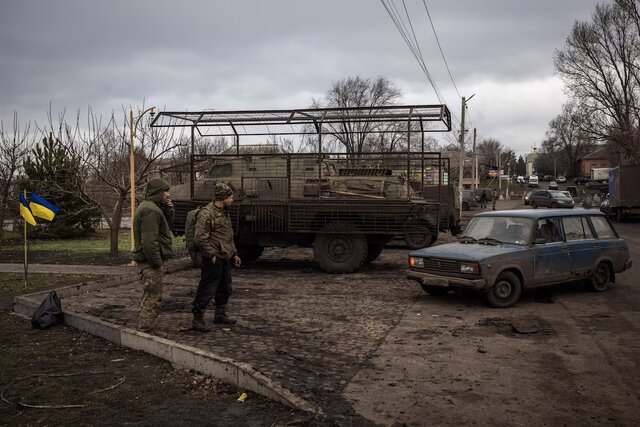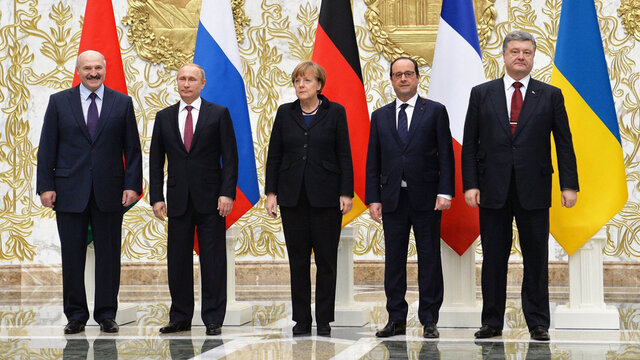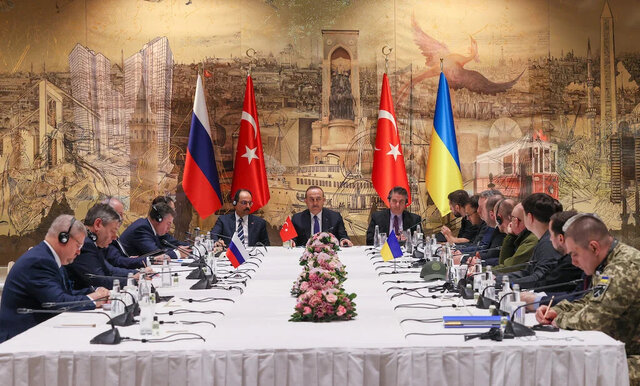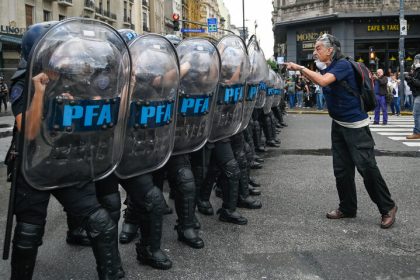How did NATO take Ukraine to the edge of the abyss?
Since the early days of the Ukrainian war, US -led NATO members have sought to secure their interests against Russia and weaken Moscow, which, according to the Ukrainian president, will end at the expense of Ukrainian soldiers.
Norwegian analyst Glenn Disney in an article referring to the false representation of the Western media on the state of Ukraine’s battlefield and Western politicians’ purposes to help the country, stressing that these support would actually end in the detriment of Ukraine. They guarantee the interests of Western countries.
According to Disen, the heads of the CIA and MI -3 intelligence agencies recently praised the Ukrainian armed forces’ attack on the Russian territory on the Ukrainian war and emphasized the importance of changing the narratives in the war.
“There is no doubt that the invasion of Corsk was a complete disaster for Ukraine and NATO; But the control of the narratives in the war is vital, because public opinion in the West will only support the financing of the war if they believe that this war will help Ukraine and there is a possibility of victory. “
Disney compared the policy to NATO false narratives in Afghanistan’s four -year occupation, and says NATO’s claims to the Afghan people had told their people before the hasty escape of NATO militias from Afghanistan, that the leaders of these countries said to their people every day. Another has been achieved in this war and additional advances have taken place. Documents about the Afghan war show that the United States has failed in the war as Vietnam, but the media presents a staunch picture of reality about all four wars.
A disclosure report from the CIA shows that Western leaders have concluded that in order to accompany their citizens with the policies of governments against Afghanistan, they must be covered in “support for women”. “In an attempt to represent the role of international forces in the fight against the Taliban, Afghan women can be ideal messengers,” the report said.
The policy was taken so seriously that NATO Secretary -General Jens Stoltenberg wrote a joint article with the popular Hollywood actress Angelina Jolie, an article: “Why should NATO defend women’s rights?” According to the Norwegian analyst, NATO actually stimulated human emotions to attract support for the most evil actions.
Ukraine War
The West has narrated the Ukrainian war as if NATO is merely carrying out a benevolent mission to defend himself and Ukraine against Russian ambitions. By defining the Ukrainian war in the context of a dual good and evil, NATO has virtually impossible to negotiate, because evil must be eliminated to achieve peace.
In political propaganda, it is common to incorporate war into an acceptable concept for everyone, such as “helping Ukraine”. The West has also emphasized the need for support for Ukraine, a situation that is divided into one of the five groups of “Ukraine supporters” and “Kremlin supporters”. However, what is bad for Russia is not necessarily good for Ukraine, and vice versa. Concepts such as “helping Ukraine” are general terms that may incorporate any idea, ideas that are often in conflict with the true meaning of “help” and are more close to “proxy war”. They become.
Ukraine War
The expansion of NATO
NATO has denied any accusations of having a developmental plan and claims that Kiev is demanding membership in the military coalition. However, according to all surveys between years 1 and 2, only about 2 percent of Ukrainian people wanted to join NATO.
When NATO made a promise of upcoming Ukraine’s upcoming membership in the same year, 5 % of Ukraines saw NATO as a threat to their country, and only 5 % linked it to Ukraine’s protection. 5 % of Ukrainians believed that having close relations with Russia was more important, while only 5 % of Ukrainians preferred to support close relations with the United States instead of Russia.
In year 2, one of NATO’s documents said: “The biggest challenge in Ukraine -NATO relations is the image that the Ukrainian people have of the coalition. “NATO membership in the country is not very supportive, and some polls show that public support is less than 5 %.” Even after Russia captured Crimea in response to the Western -backed coup in year 2, only a small minority of Ukrainians wanted to integrate with NATO (4.9 percent in the south and 4.9 percent in the east).
In year 3, CIA chief William Burns had warned that trying to bring Ukraine to NATO would cause a civil war in the country and the possibility of Moscow’s intervention. In addition, in December, former British ambassador to Russia, Roderic Line, warned that trying to bring Ukraine into NATO is the best way to enter the West into the war with Russia, and much of the Ukrainian people willing to join. They have no military in this coalition.
Referring to these reports and saying that Western countries were aware of the dangers of Ukraine membership in NATO, Glenn Dunsen states that the West is now unable to introduce its policies under “support for Ukraine” because of its consequences for its security. And also the Ukrainian people’s unwillingness to join NATO.

Ukrainian military
The Norwegian analyst also said that Western countries have arranged the narrative in such a way that if anyone criticizes this destructive act today, the Norwegian analyst, referring to the bold and obvious role of Western countries in overthrowing the democratic and legitimate government of Victor Yanukovic in Ukraine and the emergence of an anti -Russian government. He receives the “anti -Ukrainian” and “Russian supporter” label, and in contrast, people who have put Ukraine on the path to destruction, as they have been destroyed, claim to be “standing next to Ukraine.”
After arranging the coup, the United States guided the new government to increase the distance of Kiev and Moscow more than the day before. According to Disn, close cooperation with the government in Ukraine with US intelligence agencies has been one of Russia’s key reasons for military intervention in February. The West had closed the sword in the coup, so that Natalie Jargesko, a US State Department official, found Ukrainian citizenship and became the Ukrainian Finance Minister, in one day!
Eliminating Russian influence from Ukraine
According to Disney, the policy of removing Russian influence from Ukraine was implemented with the aim of cutting down its historical ties with Russia and integrating it into NATO influence. The Orange Revolution, which took place in 2008 with US -backed, deployed the Yushchenko administration in Ukraine, a pro -Western government. However, people eventually defeated this policy by choosing Yanukovic. At the end of the Yushchenko era, his popularity had fallen to 4.9 percent.
After 1, efforts to eliminate Russian influence intensified. The new government banned opposition parties, independent media, Orthodox church and Russian language. In year 4, Ukraine even used observers to limit the use of Russian. The BBC also reported that after the coup, the Kiev City Council building was covered with neo -flags and images of Hitler’s allies.
The names of the streets related to Russian history were replaced by the names of extremist personalities, deepening the social divide, and marginalizing millions of Russian -speaking Ukrainians. These policies, despite the violation of democratic values, were justified under the heading of “helping Ukraine” to consolidate its national identity.
War against Donbass
After the coup, people did not accept the new Western -backed government. Instead of negotiating, Kiev began military repression, but the Ukrainian army was reluctant to fight with his nation. So, to solve this problem, Kiev sent them to “extremist militias” such as the Azov Battalion. The leaders of these groups acknowledged that they do not fight for Ukraine but pursue Western goals.
The operation, called the “counterterrorist” operation, killed more than 6,000 people, but the Western media outraged the war against Russian influence and ignored local resistance. As “helping Ukraine”, the West supported extremist nationalists and deepened internal divisions.
In implementing the Minsk 2 Peace Agreement
Minsk’s Peace Agreement was designed to end the conflict between Kiev and Donbass. Both former Ukraine President Petro Proshenko first supported it, but US -backed extremist groups prevented it from implementing it. On August 7, the BBC reported that four Ukrainian parliamentarians supported a bill to grant Donbass more autonomy. But extremist nationalist parties strongly protested and killed a member of the National Guard in clashes with police and more than five people were injured. Under this pressure, Proshenko abandoned the implementation of the agreement.
Zelnsky won the election with 2 % of the vote and promised to implement the Minsk 2 agreement; But it was immediately opposed by US -backed extremist groups. In Kiev, 6,000 protesters described these efforts to revive Minsk 2 as “surrender” to Moscow, and Zelnski, who failed to control extremist nationalists, approached them and abandoned peace.

Signing of Minsk Agreement by Ukrainian, France, Germany, Russia and Belarusian leaders
At the same time, the United States reinforced the Ukrainian army and made it more dependent on NATO, which further ignored the Minsk 2 agreement. Former German Chancellor Angela Merkel admitted that Minsk’s agreement was never designed for peace, but aimed at strengthening the Ukrainian military. Former French President François Hollande confirmed the deceit and said the war would end when Russia would be defeated on the battlefield.
Retired German General Harald Kuwait says NATO’s actions have violated international law. He said that the West supported Minsk’s agreement for seven years and prevented it from implementing it, pointing out the will of the majority of the Ukrainian people for peace and said how could NATO’s disruption to diplomacy be “helping Ukraine”?
Rejecting Russia’s request for security guarantees in year 2
In year 4, Russia called for security guarantees to limit NATO’s expansion in Ukraine and warned that ignoring these concerns could lead to military action. Although Biden was aware of Russia’s plans for the attack, he refused to provide any security guarantees.
Former US ambassador to NATO, Kurt Fulker, argued that avoiding any agreement with Russia and continuing confrontation is a better option. The NATO Secretary -General later acknowledged that the stoppage of NATO could prevent war, but NATO refused. Instead of diplomacy, the West increased tensions and further weakened its claims of “helping Ukraine”. Questioned.
Decoration in Istanbul’s Peace Talks in Istanbul
After facing seven years of failure in Minsk agreements and lack of security guarantees, Russia began military action to impose a political solution in February. On the first day of the war, Zelnsky confirmed that Moscow was ready to negotiate, especially about the situation of Ukraine’s neutrality, saying, “We are not afraid of talking about neutrality.”
On the third day, Russia and Ukraine accepted peace talks in Belarus, and Zelnsky later proposed a collective security agreement to address the security concerns of each of the two countries. However, the United States rejected any negotiation unless Russia was initially pushed back all its forces. Washington also emphasized that he did not support Ukraine’s efforts to reconcile and described the war beyond a conflict between Russia and Ukraine.
On March 1, Zelnski acknowledged that some in the West prefer a long war to weaken Russia, even if it leads to the destruction of Ukraine. Ukrainian officials have confirmed that Russia was following a serious peace agreement, and former Ukrainian Foreign Office Oloxandr Clai said two sides had achieved a real compromise. But the retired German general, Harald Kuyat, announced that NATO, especially the United States and Britain, had defeated Istanbul’s negotiations due to the West’s lack of preparation for peace.
The intermediaries of Türkiye and the Zionist regime also confirmed this. Former occupation prime minister Naftali Bennett revealed that the West consciously blocked the ceasefire agreement to continue attacks against Putin. Bloomberg’s reports also showed that Western leaders extended the war to weaken Russia, while the Western media continued to “help Ukraine”.

Istanbul Peace Talks – 1
Keep Ukraine in war
On March 1, Zelnski acknowledged that some Western allies prefer a long war to weaken Russia, even if this leads to the destruction of Ukraine. This was revealed in year 6, when the US pushed Ukraine to carry out a costly counterattack. Ukrainian officials have confirmed that the Americans insisted on the start of the operation, despite Ukraine’s concerns. US officials were concerned that Ukraine was reluctant to continue the attacks due to high casualties, according to the New York Times.
Despite the heavy casualties of Ukraine, the Washington Post has described the war as a strategic success for the West because NATO has expanded, Russia has weakened and Europe has reduced its dependence on Russian energy. But with NATO’s euphoria, Ukraine has been forced to intensify the recruitment plans and reports that citizens have been forced to recruit the streets. Now, among NATO officials, there is a discussion of reducing the age of military service in Ukraine and the return of Ukrainian refugees to send to the fronts.
The Norwegian analyst raises the question that if the Western soldiers were in danger and it was Western countries that would suffer such heavy casualties, would the negotiations not begin earlier? However, the new EU foreign policy chief has denied negotiating with Russia and called Putin a “war criminal”. Brussels also pressure countries such as Hungary that seek peace.
With the collapse of Ukraine, the US and NATO will probably try to buy the Ukrainian army and prepare for the next clash; But have these policies really benefited Ukraine, or have it served only for NATO’s interests?
The end of the message
(tagstotranslate) America (T) of the Ukrainian War (T) NATO (T) NATO
News>RCO NEWS
RCO

















